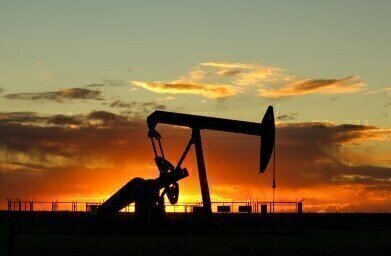Fuel for Thought
Inside the Depletion of the World’s Biggest Oil Fields
Oct 04 2015
Every month the Joint Organizations Data Initiative (JODI) releases oil supply-and-demand data encompassing around 80 countries. The insight is gathered by surveying the countries and is considered a valuable source of information for analysts evaluating demand, imports and exports. Yet despite its reputation, one expert is asserting that the figures are incorrect.
Is oil depleting faster than JODI thinks?
Late last month JODI data indicated that U.S. crude-oil production was up from 9.3 million barrels a day in June to 9.5 million barrels in July. However, the EIA’s most recent forecast predicted that July production would fall to 9.2 million barrels a day, reflecting the declination trend across the US. This is largely due to the fact that companies are slashing spending in the wake of low oil prices that simply aren’t worth their while.
So if crude oil production isn’t as high as it should be, does this mean that the world’s biggest oil fields are in decline? According to some theorists, the answer is yes. When analysing the world’s 738 largest oil fields and 1048 total oil and gas fields, oil expert Ron Patterson asserts that the figures simply don’t add up.
A second opinion
When referring to a 2013 table titled ‘Giant Oil Fields of the World Data’ Patterson explains that oil and gas company Horn and Associates calculated the decline using three rates - 6.7% per year, 3.4% per year and 1.4% per year. The overall decline rate was then calculated by using an average of the three rates. However, Horn and Associates did not calculate remaining MMBO, only MMBOE.
Patterson corrected the findings by calculated the remaining reserves from the original ultimate recovery estimate. The result was vastly different and worked out to be 3.83% decline per year.
“For the 733 total oil fields with ultimate recoverable one billion barrels or more, the total ultimate recoverable oil came to 1,435,993 MMBO. That is 1.436 trillion barrels of oil in giant fields only. But the MMBOE in those 733 fields came to 4,674,021 MMBOE. That’s 4.674 trillion barrels of oil equivalent. Of that original 4,674,021 MMBOE 1,479,623 MMBOE or 31.66% of the original ultimate recoverable oil, gas and condensate remain,” explains Patterson in a self-written article.
As oil reserves deplete, quality control will undoubtedly increase. ‘Density Measurement In The Petroleum Industry’ explores the importance of accurate and precise measurements when converting measured volumes into volumes at reference temperatures ranging from 15°C, 20°C and 60°F.
Digital Edition
PIN 25.2 Apr/May
April 2024
In this Edition Safety - Carbon monoxide toxic and flammable gas detection Analytical Instrumentation - Density: A fundamental parameter at critical stages within the petroleum sector...
View all digital editions
Events
Canada Gas & LNG Exhibition & Conference
May 07 2024 Vancouver, BC, Canada
May 08 2024 Lahore, Pakistan
May 13 2024 New Orleans, LA, USA
May 14 2024 Tashkent, Uzbekistan
May 14 2024 Oklahoma City, OK, USA


















